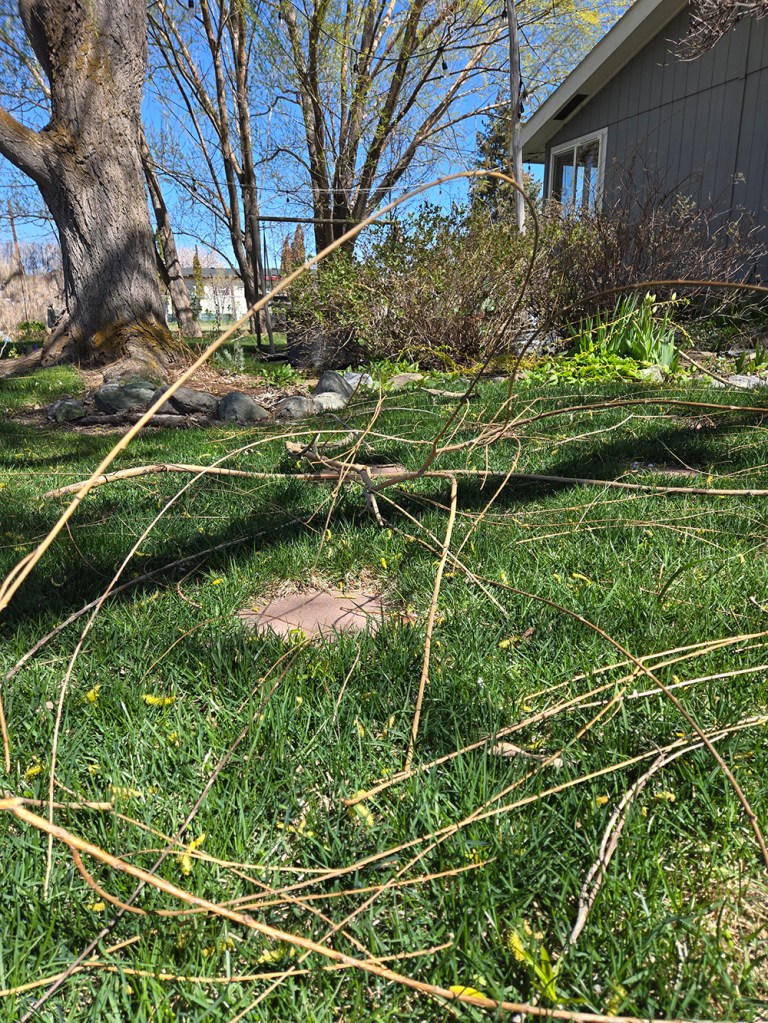COLUMN: The spring norther wreaks havoc in my yard yet again
Published 1:55 pm Thursday, April 17, 2025
I looked through my bedroom window with the unique satisfaction of gazing upon a yard put into pastoral order.
And the unique ache in the vertebrae that comes with putting a yard into pastoral order.
The grass was greening nicely in the spring sunshine, the ground still moist from a recent rain.
Last year’s leaves, as inevitable as burger wrappers in the freeway barrow pit, had been dislodged from the flower beds and the shrubs with the raucous help of an electric blower.
(If there is any chore quite so gratifying as pushing leaves around with a handheld wind tunnel — shoving them just where you want them — I have yet to discover it.)
The boundary between the grass and the rest of the landscaping had been sculpted — again with the aid of electricity — to an edge as precise as the part in the crewcut of a teenage boy in the 1950s.
The spring norther fouled this bucolic scene in just a few hours.
That’s what I call the north wind that buffets Baker County so frequently in the spring.
I call it by other names which I won’t write here lest I offend readers who expect better from a newspaper that might be seen by children.
The place was strewn with dozens of limbs, most about the width of a finger but a few as thick as a forearm.
Almost all were from willows. We have half a dozen on our modest residential lot, most planted about 20 years ago, and all shed as copiously as a Lab during a heatwave.
Some of the detritus was deadwood, the gusts having done the work of a pruning saw (but with a much higher reach than my own).
Others were live growth, still bearing the bright green curlicues that would have become sword-shaped leaves in a month or so.
I was annoyed but hardly surprised by the mess.
It’s the inevitable byproduct when the wind gets up to the dickens.
I understand the physical properties behind the phenomenon.
Wind, in most cases, is simply air moving from an area of higher atmospheric pressure to a zone of lower pressure.
Cold fronts are boundaries between higher and lower pressure. They usually move from northwest to southeast, so once they’re past Baker County they end up in Southern Idaho and Utah.
As the pressure increases in the cold front’s wake, the difference between the pressure here and to the southeast — what’s known as the pressure gradient — rises, and so does the wind speed.
The effect is exacerbated by terrain. Baker Valley, situated between mountains, acts rather like a funnel, and air, which we think of as a gas but acts more like a liquid, accelerates when it’s confined.
Science is interesting.
But science won’t help restore my yard to its so recently unsullied state.
Nor will the electric blower, limbs being much more stubborn than desiccated leaves.
I suppose it’s possible to build a device capable of lofting the limbs. But it would probably knock the house off its foundation, a problem that would be much harder on my back than picking up a bunch of willow limbs.
And harder still on my bank account.
Jayson Jacoby is the editor of the Baker City Herald. Contact him at 541-518-2088 or jayson.jacoby @bakercityherald.com.






